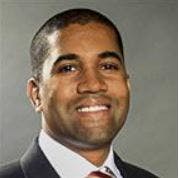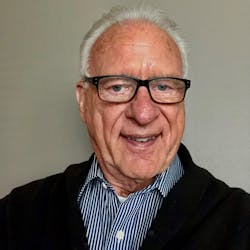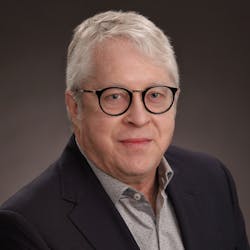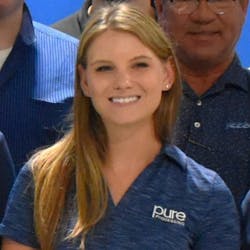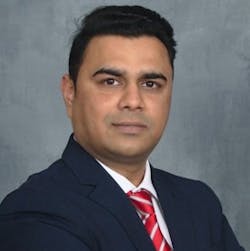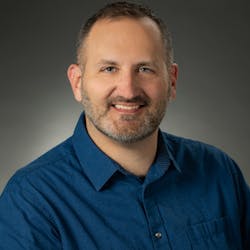Nothing like a global pandemic to reinforce the essential contributions of and the important roles played by [CSSD] professionals within healthcare organizations. Without their dedication to cleaning, decontaminating, disinfecting, sterilizing and maintaining and repairing devices and instruments used in the operating room (OR), doctors, nurses and other clinicians likely would find it difficult, if not impossible, to provide infection-free patient care.
Simply put: Sterile processing matters.
The past several years have ushered the sterile processing industry and profession into something akin to a renaissance as healthcare providers, suppliers, regulators and even payers have increased their attention to enhancing processes, products and technologies as well as to overhauling policies and requirements designed to keep patients, workers and visitors safe.
Healthcare Purchasing News devoted the introduction to this year’s annual Sterile Processing Technology Guide to the companies that support the industry and profession. HPN asked executives from 10 companies to share their insights and observations on process and product trends.
Increased efficiency
Owens & Minor understands the important role the CSSD plays in a hospital and the need for quality products so professionals can focus on patient safety. Since introducing our SMS wrap over 35 years ago we have evolved, staying at the forefront of innovation and best practices. Today, the patented technology of our SMART-FOLD sterilization wrap and our partnership with Belintra are just two examples of how we have driven efficient and protective solutions for the SPD.
I expect there will be a move toward efficient tracking and documentation of patient outcomes in the OR, an uptick in use of streamlined tools to ensure quality, and the need for workflow standardization due to the influx of CSSD traffic. Owens & Minor is focused on creating a portfolio of products that are easy to use and drive efficiency in the CSSD.
- Joe Hannibal, Sr. Director of Sterilization Marketing, Owens & Minor
The Cenorin 610 and 610HT Washer-Pasteurizer/High-Level Disinfectors automate cleaning and high level disinfection, eliminating human error and opening opportunities for safe reprocessing of semi-critical devices in respiratory, anesthesia and sleep areas where many plastic devices are well-suited for reprocessing in the Cenorin 610.
We'll continue to expand automation and increasingly use Artificial Intelligence to improve device processing and information exchange among CSSD, inventory management and surgery. A huge industry challenge is managing increased workflows with fewer people. Manufacturers must develop products that manage costs and improve efficiency, sustainability and patient outcomes.
- Ric Radford, CEO at Cenorin
Evolving standards and evolving products
Over the last few years as the CSSD has taken a more prominent role in the industry, the regulatory bodies and recommendations have evolved to match. This has forced companies, like Torvan, to follow stricter quality systems and innovate further. Some of the products we have developed include automation (eSink) for our sinks and tracking with flow sensors for our endoscope cabinets to help reduce human error and allow an optimized environment.
I believe that ( CSSD) will continue to become a more regulated and studied department where management will continue to realize the importance and invest accordingly. This would include both capital equipment improvements and worker education and training. Companies will continue to automate and there will be a significant push towards remote monitoring and support so that equipment uptime is improved.
- Doug Brown, Director of Sales & Marketing, Torvan Medical
As a U.S. EPA Safer Choice Partner, and specifically a Partner of the Year, Case Medical ensures that our products are both safer and highly effective for the intended use. We are continuing to advance our technology, by pushing the limit of what our containers and cleaners can do. For example, we questioned whether our enzymatic detergents could do more than clean, and contracted with USGS to better understand how our cleaners can prevent the spread of infectious diseases, including prion disease. We decided to see whether our proprietary multi-enzymatic cleaner formulations could effectively degrade infectious prions, the most persistent infectious agent on the planet. We discovered that our multi-enzymatic cleaners, under certain conditions of time, temperature and concentration offer great potential for decontaminating infected neurological, brain, and eye tissue from stainless steel devices.
There are many trends happening in Sterile Processing, from consolidation and off campus centralized reprocessing facilities to a greater reliance on loaner sets and new technologies. All of which will require greater coordination to prevent bottle necks. We understand that regulatory agencies are looking for more detailed documentation and proof of procedure to ensure that all steps are followed, personnel properly trained, and equipment maintained preventively. With that in mind, paper documents are not up to the task. As a company, Case Medical has gone paperless with all procedures from risk analysis, planning, R&D and production. We see a similar need in healthcare facilities to go digital, as we have done, utilizing safer data security, cloud-based software, that is ISO 27001 certified, and provides real time data. The same can be applied to CSSD departments to meet ever increasing future demands for coordinated, documented medical device usage. With so much information to review and procedures to follow, we developed software for tracking, tracing, recording with a unique 2D barcode that links to a human readable UDI and now can link with an app in real time to our IFU, and to CaseTrak360, our proprietary asset management software with a simple scan.
Sterile processing has come a long way over the last three decades. During this time, Case Medical has developed innovative products and provided monthly educational seminars with free CE, and a weekly blog to support the CSSD community. We’ve seen the introduction of complex devices that are challenging to decontaminate and a rush to get them properly processed in rapid speed. The need to process sets faster without compromising safety is why Case Medical manufactures enzymatic solutions to rapidly breakdown soil and bioburden, and containers that rapidly sterilize with dry loads for immediate use and terminal sterilization. We developed our FlashTite valve option to convert our standard SteriTite containers to IUSS with a brief dry time to express the condensate before the container is opened. Then, we went even further when we validated a 5 to 8 minute dry time for terminal sterilization with our standard SteriTite filtered container.
- Marcia Frieze, CEO, Case Medical, Inc.Enhanced equipment is the key
Pure Processing is proud to launch our newest innovation: PureSteel EZ Hinge Pegboards for our instrument reprocessing sinks. This new pegboard system allows technicians to easily deep clean behind even hard-plumbed fixtures, where aerosols may pose increased risks. The EZ Hinge Pegboards also allow equipment configurations to remain adaptable and dynamic, providing easy access to move accessories or even reverse workflows as needs evolve. Departments can add or remove accessories quickly to ensure new compliance requirements are met.
Sterile processing departments are faced with a laundry list of challenges, but ensuring compliance to IFU within the means they’re provided may be the toughest. Finding a vendor that works one-on-one with departments to understand both short- and long-term objectives while remaining compliant is key. That’s why we’re excited about our PureSteel EZ Hinge Pegboards; they’re allowing our customers to modify sink systems which usually can’t be replaced often enough to keep up with changing standards, while still allowing departments to terminally clean in accordance with infection control requirements.
- Megan Pietura, Business Operations Manager, Pure Processing LLC- Randalyn Walters, Clinical Education Manager, US, Belimed
Maximizing potential
Sterilized supplies need to remain sterile, and they can’t unless they’re more protected from routine handling. The three-touch rule allows for contact at only three points in supplies’ usable lifespans: 1) storing the tray/wrap, 2) removing the tray/wrap from storage and placing it on the case cart, and 3) opening the tray/wrap in the OR. However, many more than three touches occur in CSSDs on a regular basis. The more a tray/wrap is handled, the more likely it needs to be re-sterilized. Hänel’s Rotomat automated sterile storage carousel prevents physical contact with sterile supplies until they’re ready to be used in the OR.
- David Phillips, Marketing Manager, Hänel Storage SystemsWe found that fundamentally, the workforce is being required to master increasingly complex processes without the proper tools to do so.
We completely agree that technology and complexity is on the rise in sterile processing, but we are not convinced that quality and effectiveness have been advancing along with it. Based in the heart of Silicon Valley, LayerJot is not only focused on bringing the latest technology to sterile processing, but also – and more importantly – making it maximally usable and effective in the hands of sterile processing staff.
At the intersection of people, surgical instruments and devices, the LayerJot EasyTray - tray assembly solution helps to ensure that every single surgical instrument and device is correctly identified, inspected, and assembled according to the complex requirements required to ensure patient safety and surgeon satisfaction. We use Computer Vision to accurately identify the instruments, and seamlessly deliver the largest content library of its kind directly to the technician when they need it most. If CSSD technicians are spending more time on the critical tasks like inspection and assembly, and less time searching the internet for accurate and reliable information (or worse – guessing), we’re going to make a real impact on patient safety and surgeon satisfaction.
We believe there is a tremendous opportunity to close the information gap between current practices and optimized workflows. Today, too many decisions between the OR and CSSD are made without the data to support them. We are working hard to close this gap by automatically collecting OR utilization data, so practical and meaningful action can be taken to optimize complex surgical trays and inventory.
- Etay Gafni, CEO, LayerJot
Protecting our patients
Innovia Medical’s InstruSafe products can help address these challenges by providing advanced solutions for protecting surgical instruments during sterilization processes. Our unique sterile processing solutions offer a range of benefits including the prevention of instrument damage and the promotion of consistent sterilization techniques through customized sterilization trays, specialized packaging, labeling, and tracking features.
By using InstruSafe products, hospitals and medical facilities can improve their sterile processing practices while reducing the risk of infection for patients. By adopting these advanced solutions, the sterile processing industry can make significant strides in ensuring the safety and well-being of patients while improving its overall efficiency and effectiveness.
- Aaron Lieberman, Director of Sales and Marketing – Sterile Processing, Summit Medical
Addressing the ever-increasing concern of cross-contamination in hospitals and medical facilities we at Ruhof, recently added the ELEMENTUM Multi-tiered Enzymatic Detergents to our product line of cleaners. Featuring 4 new molecules of enzymes created for the medical device cleaning market —ELEMENTUM and ELEMENTUM AW rapidly break down tough-to-clean medical soils including the multi-layers of bioburden and prevent redeposition. The first and only enzymatic detergent to conform to ASTM8179, Elementum also complies with both AORN and AAMI Guidelines for optimal cleaning detergent characteristics.
Beyond decontamination Ruhof also allows healthcare professionals to verify cleaning effectiveness with the ATP Complete 2 Contamination Monitoring System. ATP Complete 2 is a reliable method for verifying the cleanliness of all endoscopes, surgical instruments, and surfaces with results in only 15 seconds. This next generation technology features a user friendly, smart handheld mobile platform, Wi-Fi connectivity, infinite users and test points, RFID and Barcode reader and more.
- Douglas MacKay, VP of Sales & Marketing, Ruhof Corporation
Vendor Listings & Product Spotlights
About the Author
Scott Tomko
Managing Editor
Scott Tomko was previously Managing Editor for Healthcare Purchasing News.

